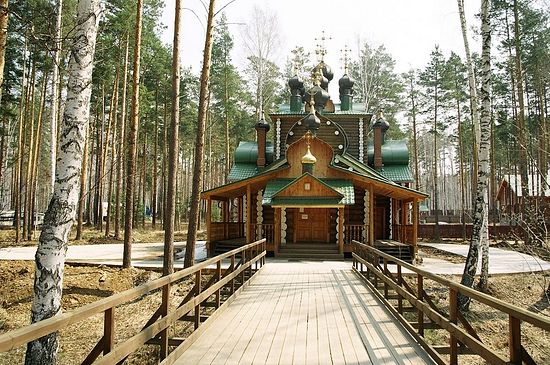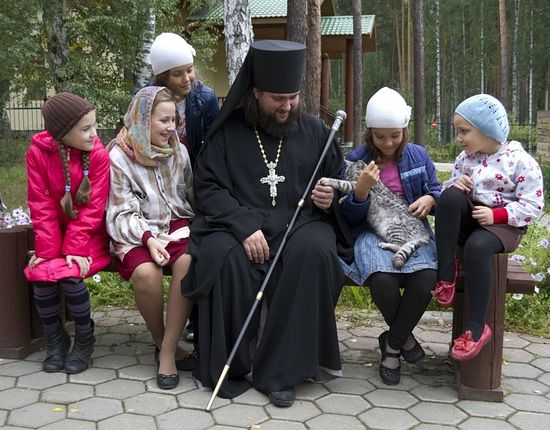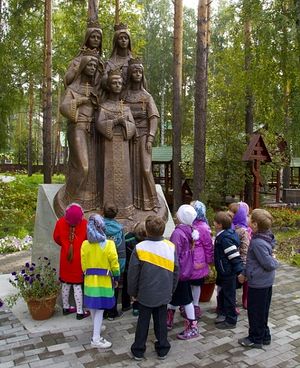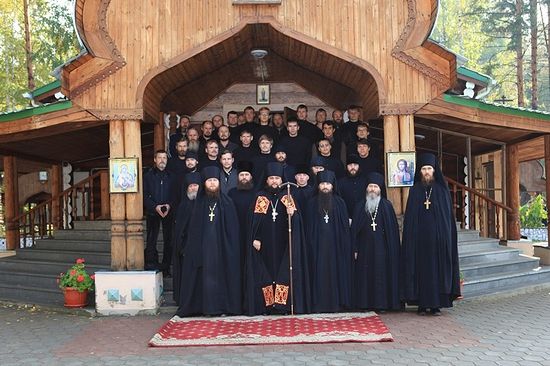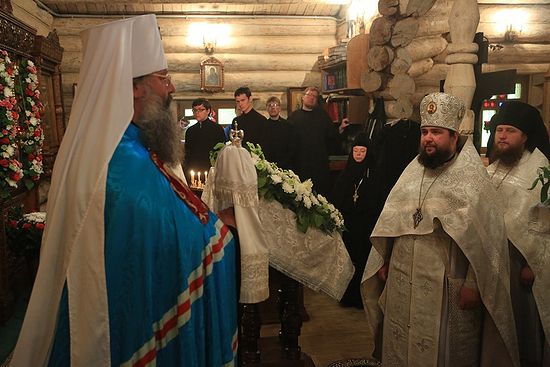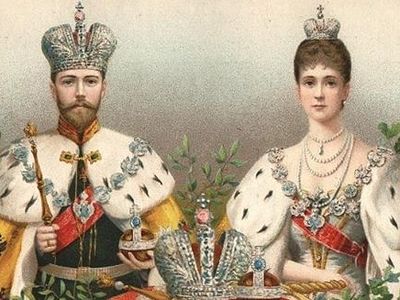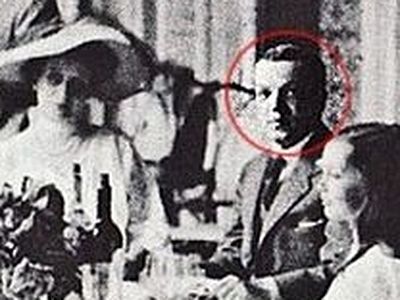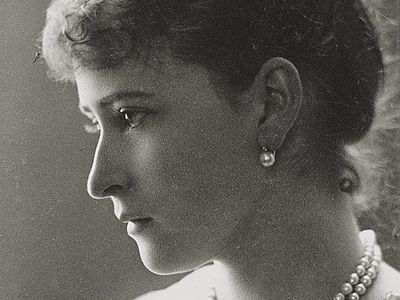The Monastery of the Holy Royal Martyrs in Ganina Yama (“Ganya Pit”) is one of the youngest monasteries in Russia. It was founded on the site of a Russian tragedy: it was here that the bodies of the members of the royal family and their faithful servants, murdered in the basement of the Ipatiev House, were brought from Ekaterinburg to be destroyed in July of 1918.
On September 23, 2000, during his stay in the Urals, His Holiness Patriarch Alexis II visited Ganina Yama. The primate of the Russian Orthodox Church then noted that the best way to perpetuate someone’s memory in Russia was always the establishment of a church or a monastery. Thus the patriarchal blessing for the foundation of the Ganina Yama Monastery was received.
On the fifteen anniversary of the monastery’s foundation, Pravoslavie.ru spoke with its abbot, Archimandrite Pimen (Adarchenko).
—Father Pimen, what does the appearance of a monastery in such a terrifying and yet holy place (for the whole of the Russian nation) as Ganina Yama after many years of atheism mean?
—As Christ says in the Gospel: And upon this rock I will build My Church; and the gates of hell shall not prevail against it (Mat. 16:18). And now we see how these words are coming true. After eighty years, when, as it seemed, Orthodox Russia had all but disappeared with the memory of the martyred royal family, it appears that the Orthodox faith has not been lost. And the memory of the innocent people who had suffered for the faith and the motherland once again blazed forth brightly.
Today the Holy Royal Martyrs, who in the Heavenly Kingdom obtained the qualities of the leaven from the Gospel, which a woman took, and hid in three measures of meal, till the whole was leavened (Mat. 13:33), are helping each of us in the spiritual growth and in the rise of the country. The main thing is to pray to them. And the appearance of our monastery is evidence of the absoluteness of the Evangelical truth.
—What does this site mean for the Russian people? How do you feel this through communication with those who come to venerate this holy land, as participants in processions of the cross to commemorate the Holy Royal Martyrs?
—Those who visit us participate in church life to varying degrees; furthermore, their knowledge of the Orthodox faith and Russian history varies. This is why everyone as far as possible is ready to accept and absorb what this holy place gives in terms of self-awareness, awareness of history and enrichment of their spiritual experience.
Our guides say that many people even change outwardly after visiting our monastery. They straighten their shoulders. Even their appearance changes! Their attitudes towards their own lives even change along with their perception of Russian history. People begin to realize that they are a part of this history.
—A similar goal was also pursued by Archimandrite Tihon (Shevkunov), who together with a team of historians, painters, and other specialists prepared the exhibition, "Orthodox Rus. The Romanovs. My history" and other expositions. Now a permanent historical park, based on all these exhibitions, which visited many cities and towns of Russia, is being formed at the Moscow Exhibition of Achievements of National Economy (VDNKh). These are the results of a really titanic work. And in Ganina Yama the holiness of the site speaks for itself. It seems that here you can become a genuine Russian instantly, take a more sober look at things, and free yourself from all the external influences in our recent history. Isn’t it so?
—Yes, one of our pilgrims, Alexander Osintsev from Ekaterinburg, on his firstborn child’s birthday brought the boy’s grandmothers and grandfathers here. He was convinced that, having become a father, he was obliged to begin his baby’s upbringing by introducing him to the spiritual world that was so characteristic of the people of Tsarist Russia of the previous generation.
—The generation of that Russia, which was the backbone even of Soviet society, will be gone soon and now is disappearing. Yet it is more important for us to embrace the faith and return to our roots. Even foreigners (and we could follow their example too) now often say, “To be Russian means to be Orthodox; and vice versa: to be Orthodox means to be Russian.”
—Indeed, we do not have only Russian guests in the monastery. This year during the cross procession held during the days commemorating the Royal Family, representatives of ten other countries walked together with pilgrims from Russia: they were from Czech Republic, Serbia, America, Japan and other nations.
Japanese samurai came from the Satsuma province where their ancestor once received the future Emperor St. Nicholas II. And now, when 110 years have passed, the Japanese fulfilled the promise given by the prince of Satsuma to the Tsarevich and came to honor the emperor’s memory. “We in our country remember and honor the Emperor Nicholas II. Today we pay tribute to the martyred Tsar Nicholas and his family and want to express our respect, deference and sympathy,” said a participant of the procession, president of the Council for the Support of the Satsuma-Russian Ties Akahori Norio.
During the procession of the cross the Japanese learned the Jesus prayer in Russian by heart and on their arrival to the monastery they declared that their veneration of the Russian Tsar would be stronger henceforth.
—Are there any real stories of what happens to people here?
—The main miracle is the inner transformation of people, the transfiguration of their souls. These things are usually invisible; people take their innermost feelings with them as they leave. But impulses of souls and a hope for fulfillment of their desires can often be seen.
Not long ago we had a group of disabled children coming here. Some of them had no arms, others no legs. But how they yearned to get into the Church! They could not even wait for the volunteers’ assistance. The children simply tumbled out of their wheelchairs and literally crawled towards the church with the help of their arms or torsos.
Another time our priest told orphaned children about guardian angels: “Mothers and fathers can help some of us. But nobody loves us as strongly as the Lord and the Holy Theotokos. They send guardian angels to everybody so that they might be with us every minute.” One girl then began to cry and asked to be baptized. When this group of pilgrims returned back home, most of them were baptized.
I do not know who has received help from God or how after visiting our monastery. But I feel certain that this help well may have changed their lives.
—And who comes to serve God at this monastery? What kind of people are they?
—There are people of different ages and life experience. Young people study in the seminary and gradually reach a decision to take up monasticism. And sometimes someone in the evening of his life has an overwhelming desire to serve the Almighty.
In any case, it is a question of time—to understand if it is the will of God that he should become a monk. Even if he becomes a novice, it does not mean that he will necessarily become a monk. You can make a wrong decision in choosing a profession, institute, but you cannot become a monk by mistake.
—What brings people to your monastery in particular?
—I am convinced that it is the Lord Himself Who determines the site of a monk’s ministry.
—What do the Holy Royal Martyrs mean for you personally?
—I often recall one story. Metropolitan Kirill, then still an archbishop,1 once took me to the grave of his spiritual father, the reposed Metropolitan Serapion of Tula and Belev.2 We celebrated a Divine Liturgy and Archbishop Kirill performed a memorial service after it.
Then he gave me a hand-painted lectern-sized icon of the martyred tsar and said: “Metropolitan Serapion deeply venerated the royal family; that is why I am giving you this icon with my blessing.” At that moment I took it only as a gift and blessing of the hierarch, not thinking that it was a special sign for me.
Ten years passed, and the metropolitan unexpectedly appointed me to the monastery in honor of the Royal Martyrs! When I went to Ganina Yama with the bishop's decree concerning my nomination it was as if I had been pierced with a thought. I could not understand where this feeling was coming from. My soul felt trepidation and excitement. And then I remembered that icon. The icon remained in my mother’s house and never moved with me from cell to cell. Occasionally I saw it when I came to see my mother. But at that moment I realized it was no coincidence that I had been given this icon of the holy tsar with the hierarchal blessing; it was providential—the Lord determined that I should serve the royal family.
And there is the Lord’s Providence for other brothers of this monastery who are carrying out their ministry for the good of this house of God.
—Presently it is the Church that takes the mission of restoration of historical justice upon itself, acting as the keeper of the basics of objectivity on Russian history. We have already mentioned the incredible exhibitions such as “My History” held within the framework of the “Orthodox Rus” annual forum, but work is being done throughout the country—in the dioceses, at the parishes and monasteries. How is this mission being carried out in your monastery?
—Apart from customary monastic labors, Metropolitan Kirill gave us his blessing for missionary and educational activities. We have an excursion service. Today, on the fifteenth anniversary of the establishment of the monastery, we are opening a museum and educational center here. Films on our monastery are being produced, books and journals on this theme are being published. Thus we are destroying the myths about the royal family invented by the Bolsheviks, striving impartially to bring to light the contribution of these much-slandered saints to our national history.
—What is happening today in Russia, with the Russian people, through the prayers of the New Martyrs and Confessors of the Russian Church, the Holy Emperor Nicholas II and his martyred family? How is it felt, revealed in this holy place—the Monastery of the Holy Royal Martyrs in Ganina Yama?
—People are being transformed, they are becoming purer and kinder; the state is changing radically and beginning to respect every individual person; the society we live in is being transformed as well: it is setting as its cornerstone not abstractions like “the bright future,” which in reality ended up murdering millions, but love for one's neighbor.
Yes, not everyone sees these changes, but not everyone is praying for them! Unfortunately, not all Russian people pray to the Holy Royal Martyrs, or the New Martyrs and Confessors of the Russian Church.
But, nevertheless, very often people coming to our monastery tell us about positive changes. They feel these changes in their own lives! And we can only support them by our prayers so that these changes might become irreversible.
Photos by the author and from the monastery’s archive.
